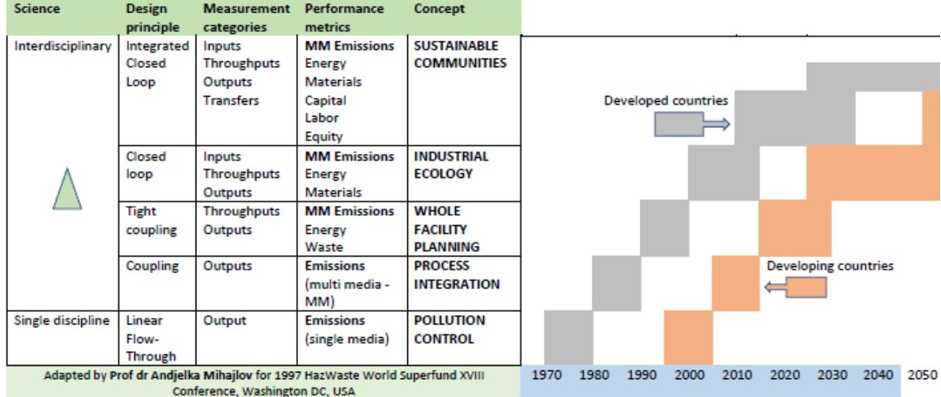History - Interdisciplinary Intermediate

Reading Guide
The goal of this course is to underline the fact that air pollution (emissions) from any source is related to the emissions into other environmental media from the same point source. An introductory chapter provides the historical background on air pollution. Topics include a historical overview of international air quality regulations (since the 1970s) and a holistic explanation starting from single media emission-pollution control, multimedia-process integration, multimedia/energy/waste-whole facility planning, multimedia/energy/materials-industrial ecology, to the concepts of multimedia/energy/materials/capital/ labor/equity-sustainable communities. A sustainable community manages its human, natural, and financial capital to meet current needs while ensuring that adequate resources are available for future generations.
Crucial events leading up to the concepts of integral pollution and prevention are presented, including the European Union 2020 Green Deal pillar on “depollution” (air, water and soil). The integrated approach incorporates the entire environmental performance of the plant, covering, for example, the emissions to air, water and land, the generation of waste, the use of raw materials, energy efficiency, noise, the prevention of accidents and the restoration of the site upon closure.
Concurrently the design principles ranging from linear flow through to an integrated closed loop are interconnected with the presented performance metrics and concept, as well as the development from a single science discipline to the need for interdisciplinary science (an example is that nowadays, policymakers and air quality managers rely on cutting-edge science to establish regulations and make management decisions to reduce and control air pollution using cost-effective approaches).
Topics include an analysis of the difference in speed between developing and developed countries, from applying single media emissions to integrated pollution performance metrics.
The following material provides examples of several websites with useful information.
Material
- EPA: History of Air Pollution
- European Commission: Clean Air
- Institute for Sustainable Communities: What is a Sustainable Community?
- European Commission: Industrial Emissions Directive
- Mihajlov, A.N. (2009) Osnove analitickih instrumenata u oblasti zivotne sredine [Publication in Serbian: "Fundamentals of analytical instruments in the field of environment"]
Guide prepared by Prof dr Andjelka Mihajlov (10/2020). For corrections or expansions please contact us.